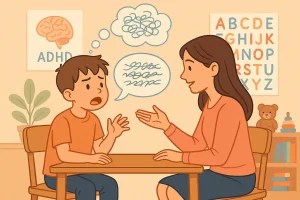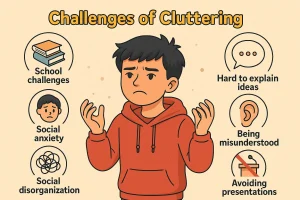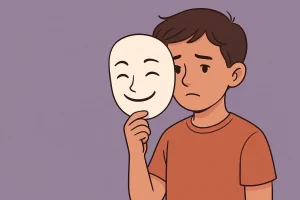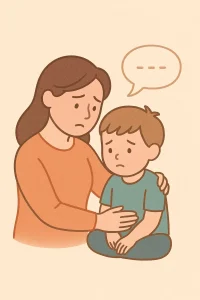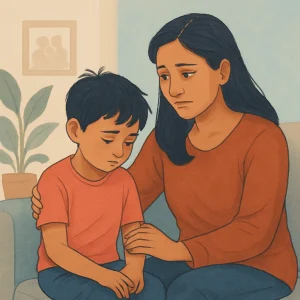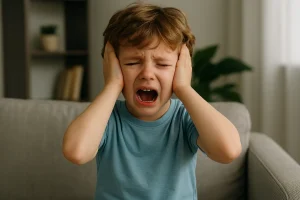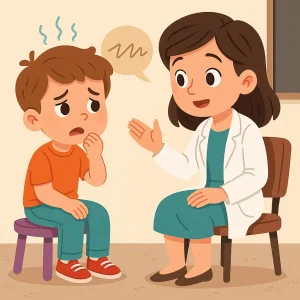10 Common Signs of Dysarthria in Children and Adults
Last Updated: April 14, 2025
Is your child’s speech sounding slurred or robotic? Or have you noticed sudden speech changes in an elderly loved one after a stroke? These could be signs of dysarthria, a serious yet treatable motor speech disorder that affects the clarity and rhythm of spoken words. Whether in children with cerebral palsy or adults recovering from neurological conditions, dysarthria can make everyday communication difficult and emotionally draining. But here’s the good news—early recognition and targeted speech therapy can lead to meaningful improvements.
In this guide, we’ll break down the top 10 signs of dysarthria, explore the causes in both children and adults, explain the difference between dysarthria and apraxia, and show how speech therapy can bring back clarity, confidence, and connection.
What is Dysarthria?
Have you ever met someone who struggles to speak clearly—not because they don’t know what to say, but because the words come out slurred or hard to understand? That could be a sign of dysarthria, a type of motor speech disorder. In simple terms, dysarthria means the muscles that help us speak—like the lips, tongue, vocal cords, or even breathing muscles—don’t work properly together.
This isn’t about not knowing the right words. It’s about not being able to say them clearly because the body can’t move the way it needs to for speech.
How Dysarthria Affects the Speech Muscles
Dysarthria can make speech sound slow, slurred, weak, or even robotic. That’s because it affects different parts of the body that help us talk. For example, if the lips and tongue are affected, it becomes hard to pronounce words clearly. If facial muscles are weak, there may be limited jaw movement or even drooling. A person whose vocal cords are involved might have a flat or hoarse voice that doesn’t change tone. And when the muscles that control breathing are weak, the person might speak in short bursts or struggle to get enough air to finish a sentence.
Every person’s experience with dysarthria is different, depending on which muscles are involved and how severe the condition is.
Dysarthria in Children vs. Adults
Although dysarthria affects both children and adults, the causes and challenges can vary. In children, dysarthria is often present from birth and linked to conditions like cerebral palsy, brain injuries, or genetic disorders. It can delay their ability to learn speech and make it hard to interact with others. But with the right help early on, many children show great improvement.
In adults, dysarthria is commonly caused by stroke, brain injuries, Parkinson’s disease, or other neurological conditions. The speech changes may happen suddenly—especially after a stroke—and can impact a person’s confidence, job, and daily communication.
Causes of Dysarthria in Children and Adults
When someone struggles to speak clearly due to weak or uncoordinated muscles, there’s always an underlying reason. These reasons are often connected to the brain and nervous system, which control how our speech muscles work. Understanding the causes of dysarthria helps in finding the right support and treatment, especially when symptoms show up suddenly or at a young age.
Concerned about your child’s speech clarity? Book a free consultation with a certified speech therapist at Wellness Hub and take the first step toward confident communication.
Common Causes of Dysarthria
Dysarthria can happen to anyone—whether a child is just learning to talk or an adult is recovering from a health issue. Here are the most common causes:
- Stroke: A stroke can damage the brain’s ability to control muscles used for speech, leading to slurred or slowed-down speech in adults.
- Cerebral Palsy: In children, dysarthria is often linked to cerebral palsy, a condition that affects movement and muscle tone from birth.
- Brain Injury: Accidents or trauma can injure the parts of the brain responsible for speech, causing motor speech problems at any age.
- Parkinson’s Disease: Many adults with Parkinson’s experience speech changes due to reduced control over their vocal cords and facial muscles.
- Multiple Sclerosis (MS) or ALS: These neurological diseases can also affect speech muscles over time, leading to gradual speech decline.
Congenital vs Acquired Dysarthria
It’s important to know the difference between congenital and acquired dysarthria.
- Congenital dysarthria is present at birth. It usually appears in children with conditions like cerebral palsy or other developmental disorders. These children might struggle to learn speech from the beginning.
- Acquired dysarthria develops later in life. It’s more common in adults after a stroke, brain injury, or progressive condition like Parkinson’s or ALS. Speech might suddenly become difficult or gradually decline over time.
Why Early Diagnosis Matters
Spotting the signs early makes a big difference. For children, it means getting help during those important years when speech and language skills are forming. For adults, early support after a stroke or diagnosis of a neurological condition can prevent further decline and boost recovery.
Signs of Dysarthria in Children
If your child is trying to speak but their words sound slurred, slow, or hard to understand, it could be more than just a delay—it might be dysarthria. This motor speech disorder affects how the muscles in the mouth, face, and respiratory system work together to produce clear speech.
The tricky part? Young children may not be able to explain what they’re feeling. That’s why it’s so important for parents and caregivers to spot the early signs.
Common Speech Symptoms in Kids with Dysarthria
Every child with dysarthria is different, but there are some clear signs to look out for:
- Slurred or Slow Speech: Words may sound mumbled, as if your child is speaking with a heavy tongue. Sentences might come out slowly and lack clarity.
- Poor Breath Support While Speaking: You might notice your child runs out of breath mid-sentence or can only speak in short bursts.
- Trouble Moving Lips or Tongue: If your child struggles to move their mouth properly when speaking, they may avoid talking altogether or get frustrated trying.
- Drooling or Choking While Eating: Dysarthria doesn’t just affect speech—it can also impact chewing and swallowing, making mealtimes difficult or messy.
Signs of Dysarthria in Adults
Have you or someone you love recently started having trouble speaking clearly? Maybe the words sound slurred, flat, or unusually slow. For many adults—especially after a stroke or neurological illness—these may be early signs of dysarthria, a motor speech disorder that affects how the muscles used for talking function.
Let’s explore some of the most common speech symptoms adults with dysarthria may experience.
Common Signs to Look Out For
1. Sudden Slurred Speech (Post-Stroke)
One of the most noticeable signs of dysarthria in adults is sudden slurred or unclear speech, often following a stroke. The person may still know exactly what they want to say, but their words sound distorted or difficult to understand.
2. Low Volume or Monotone Voice
A person with dysarthria might speak very softly or in a voice that lacks normal ups and downs. The speech may sound robotic or flat, with little expression.
3. Uneven Rhythm or Pace
Speech may come out in uneven bursts. Some words may be rushed, while others are stretched out. This irregular pattern makes it harder for others to follow the conversation.
4. Facial Muscle Weakness
You might notice drooping in the face or reduced movement of the lips and tongue. This weakness can affect both speech and facial expressions, making communication even more challenging.
5. Emotional Frustration with Speech Difficulty
Most adults with dysarthria are aware that their speech has changed. This can lead to embarrassment, withdrawal, or frustration, especially in social or professional situations.
Dysarthria vs Apraxia: Know the Difference
When a child or adult struggles to speak clearly, it’s natural to wonder: Is it dysarthria or apraxia? While both are motor speech disorders, they are not the same—and understanding the difference is key to choosing the right therapy.
Same Goal, Different Challenges
Both dysarthria and apraxia affect the ability to speak, but they do so in very different ways.
- Dysarthria is caused by muscle weakness or poor muscle control. The person knows what they want to say, but their muscles can’t move well enough to say it clearly.
- Apraxia of speech is caused by a disconnect in the brain’s planning. The muscles are fine, but the brain struggles to send the correct signals to move them in the right sequence.
Quick Comparison: Dysarthria vs Apraxia
| Feature | Dysarthria | Apraxia of Speech |
|---|---|---|
| Cause | Muscle weakness or poor coordination | Brain struggles to plan movements |
| Muscles involved | Yes – affected muscles | No – muscles are usually strong |
| Speech sounds like | Slurred, slow, mumbled | Groping for words, inconsistent errors |
| Breathing/Swallowing issues | Often present | Rare |
| Consistency of errors | Consistent across attempts | Errors vary each time |
| Language ability | Language is usually intact | Language is also intact |
| Treatment focus | Strengthening and coordination | Motor planning and sequencing |
Why Accurate Diagnosis Matters
It’s easy to confuse one for the other, especially in children who are just learning to talk. But the difference between dysarthria and apraxia isn’t just medical—it affects how therapy is done.
For example:
- A child with dysarthria may benefit more from muscle exercises, breathing techniques, and tools that improve clarity.
- A child with apraxia needs help with motor planning, which means lots of repetition, imitation, and cue-based strategies.
Can Dysarthria Be Treated?
Yes—dysarthria can be treated, and the right approach can make a big difference in how well a person communicates. While there’s no one-size-fits-all cure, speech therapy helps strengthen muscles, improve clarity, and boost confidence.
The key is finding a treatment that matches the person’s exact needs, whether it’s a child learning to talk or an adult recovering from a stroke or brain injury.
What Are the Goals of Dysarthria Treatment?
The main goal of dysarthria treatment is to help the person speak more clearly and be better understood in daily life. Depending on the cause and severity, therapy may focus on:
- Improving speech clarity and volume
- Enhancing breath control for longer phrases
- Strengthening lip, tongue, and jaw movements
- Increasing facial muscle coordination
- Building confidence in everyday communication
Therapy doesn’t just improve speech—it also gives the person tools to express themselves better and feel more in control.
Speech Therapy for Dysarthria: What to Expect
In speech therapy, the techniques and exercises are customized based on the person’s challenges. Some of the common exercises include:
- Breath control activities to help with longer, smoother sentences
- Repetition drills to improve clarity and articulation
- Mirror exercises to support lip and tongue movement
- Pacing strategies to slow down rapid speech and improve rhythm
- Voice exercises to strengthen volume and tone
Home Tips to Help Someone with Dysarthria
When a loved one is dealing with dysarthria, small changes at home can go a long way. Whether it’s a child learning to speak or an adult recovering from a stroke, your daily support can make speech therapy even more effective.
Easy Ways to Support Dysarthria Speech at Home
1. Speak Slowly and Clearly
When you speak to someone with dysarthria, slow down a bit. Use short, clear sentences and give them enough time to respond. Avoid finishing their sentences unless they ask for help. This makes them feel heard and respected.
2. Use Gestures or Visual Aids
Sometimes speech alone isn’t enough. Support their communication with hand gestures, pictures, or objects. This helps get the message across and makes conversations easier—especially for children.
3. Practice Therapy Exercises at Home
If a speech therapist has given specific exercises, try to practice them daily in a fun, stress-free way. Keep it short, positive, and part of a routine—like during playtime for kids or over tea for adults.
4. Encourage Social Interaction
Talking regularly with friends and family helps improve confidence. Create a safe space where they feel comfortable making mistakes. Group games, reading stories aloud, or simple chats can boost communication skills over time.
Keep in Mind
- Be patient—it’s okay to ask for repetition, but do so gently.
- Praise efforts, not just outcomes.
- Reduce background noise during conversations.
- Use video calls or messages to encourage communication when in-person isn’t possible.
Conclusion
Supporting someone with a speech disorder takes love, patience, and daily encouragement. Progress may be slow, but every small step counts. With consistent support and the right therapy, speech can improve, and confidence can grow. Whether it’s your child or a family member, you can help them feel heard and understood. If you’re looking for trusted speech therapy in India, Wellness Hub offers expert online programs for all ages. You can also explore our home therapy resources to support speech at home in a fun and easy way. You’re not alone—let’s grow together!
Frequently Asked Questions:
1. What is dysarthria in simple words?
Dysarthria is a speech disorder where the muscles used for speaking are weak or hard to control. This makes speech sound slurred, slow, or unclear.
2. What causes dysarthria in children?
Dysarthria in children is often caused by brain conditions like cerebral palsy, brain injury, or muscle problems that affect speech.
3. Can adults develop dysarthria suddenly?
Yes, many adults develop dysarthria suddenly after a stroke, head injury, or conditions like Parkinson’s disease or ALS.
4. How do I know if my child has dysarthria?
If your child has slow, unclear speech, struggles to move their lips or tongue, or drools while talking or eating, they may have dysarthria.
5. What’s the difference between dysarthria and apraxia?
Dysarthria is caused by weak muscles. Apraxia happens when the brain has trouble planning how to move the muscles, even if the muscles work fine.
6. Can dysarthria be treated at home?
Yes, you can support dysarthria at home with speech exercises, visual aids, and regular practice. Therapy guidance is still important.
7. What are the best exercises for dysarthria?
Breathing control, mouth movements, slow speech practice, and repeating simple words are helpful exercises. A therapist can guide you better.
8. Is dysarthria a lifelong condition?
It depends. Some people improve with speech therapy, while others may need long-term support. Early treatment makes a big difference.
9. How does speech therapy help with dysarthria?
Speech therapy helps strengthen speech muscles, improve clarity, and build confidence in speaking. It teaches useful ways to communicate better.
10. Where can I get online speech therapy for dysarthria?
You can explore expert-led online therapy at Wellness Hub, which offers personalized programs for both children and adults.
About the Author:
Shilpa Deshpande
Shilpa Deshpande is a skilled speech-language pathologist with over 14 years of experience. Fluent in Kannada, Telugu, Hindi, and English, she specializes in parent counseling, speech sound disorders, fluency assessment, and speech-language evaluations. Shilpa excels at working with children with developmental disorders, offering creative and effective therapy programs. Currently, at Wellness Hub, she holds a BASLP degree and is registered with the RCI. Her patience, ambition, and dedication make her a trusted expert in her field.
Book your Free Consultation Today
Parent/Caregiver Info:
Client’s Details:
* Error Message



